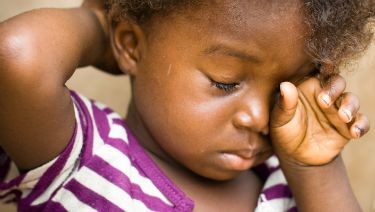Dehydration occurs when you use or lose more fluid than you take in, and your body doesn’t have enough water and other fluids to carry out its normal functions. If you don’t replace lost fluids, you will get dehydrated.
Anyone may become dehydrated, but the condition is especially dangerous for young children and older adults.
SYMPTOMS
Thirst isn’t always a reliable early indicator of the body’s need for water. Many people, particularly older adults, don’t feel thirsty until they’re already dehydrated. That’s why it’s important to increase water intake during hot weather or when you’re ill.
The signs and symptoms of dehydration also may differ by age.
INFANT OR YOUNG CHILD
Dry mouth and tongue
No tears when crying
No wet diapers for three hours
Sunken eyes, cheeks
Sunken soft spot on top of skull
Listlessness or irritability
ADULT
Extreme thirst
Less frequent urination
Dark-colored urine
Fatigue
Dizziness
Confusion
PREVENTION
1. Keep a Water Bottle Handy
Here’s a piece of advice that’s easy and efficient: Always try to keep a reusable bottle or cup of water with you throughout the day. If you’re one of those people who has trouble remembering to drink as much water as you should, having a bottle near you will help keep it at the top of your priorities list. Plus, refills are free.
2. Don’t Wait Until You’re Thirsty
Fatigue, headache, dizziness — all can be indicators that it’s time to rehydrate. But what about thirst? Interestingly enough, many maintain that by the time you actually feel thirsty, you’ve probably already lost a significant amount of water. For this reason, it’s important to drink small sips regularly throughout the day (chugging a full drink in one sitting isn’t required, it’s not like you’re at a college frat party after all).
3. Make Your Water More Interesting
Not much of a fan of plain water? Many recommend adding herbs and fresh fruit — citrus and berries are popular choices — to you water to boost the flavor intrigue. (We love this recipe for watermelon, mint, and cucumber water.) Some also claim that lemon water (made by mixing in the juice of a quarter a lemon) helps balance electrolytes and promotes the absorption of water into your cells. Or if you’re a big soda drinker, opt for sparkling water or club soda instead which at least offers a similar texture — just make sure it doesn’t have any added sugar or sodium.
4. Drink Fresh Fruit & Vegetable Juices
Believe it or not, water is not the only star of the hydration show — electrolytes, essential fatty acids, and minerals are also important when it comes to keeping you hydrated. So opt for fresh juices made from high-water content fruits and vegetables to supplement your body’s needs. Think watermelon, cucumber, tomatoes, strawberries, and the like. (Watching your weight? Try diluting the juice with water or club soda to help cut down on the sugar and calories.) And actually, you don’t just have to drink your juice — fresh fruit popsicles are a great (not to mention tasty) hydrating alternative.
5. Other Water Alternatives
Aside from fresh fruit and vegetable juices, drinks like coconut water and skim milk are also good hydrators. Some have claimed skim milk hydrates better than Gatorade, while coconut water is an isotonic liquid, and packed with a variety of good-for-you vitamins and minerals.
6. Minimize Your Caffeine and Alcohol Intake
This one’s a bit of a no-brainer but worth stating nonetheless. Both alcoholic beverages and caffeinated drinks like coffee, tea, and soda act as diuretics and can contribute to dehydration. You don’t have to give up your morning cup of coffee or nightly glass of wine, just be mindful to consume these types of beverages in moderation.

